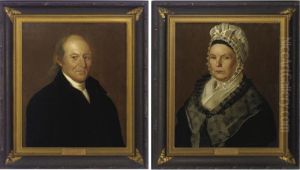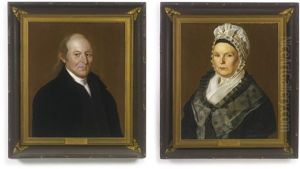Richard Jennys Paintings
Richard Jennys was an American artist, primarily known for his work as a portrait painter during the 18th century. Born in 1752, little is known about his early life and training. It is believed that he may have been self-taught or possibly apprenticed under another artist, which was a common practice at the time. Jennys' career and life were relatively short, as he died in 1787 at the age of 35. Despite the brevity of his career, Jennys managed to produce a body of work that garnered attention and appreciation during his lifetime and posthumously.
Jennys worked during a significant period in American history, a time when the colonies were seeking independence from British rule. This era, rich in political and social change, provided a backdrop for his portraits. He is known to have traveled between various American colonies, such as South Carolina and New England, painting portraits of prominent local figures and families. His style was characterized by its delicate treatment of the subject, a characteristic approach of American colonial portraiture, which focused on capturing the likeness and personality of the individual.
Although Jennys' works were primarily portraits, the details of his subjects' attire and surroundings also offer insights into the lifestyles and social contexts of the American colonial period. Unfortunately, due to the limited documentation and the fragility of many artworks from this era, only a handful of Jennys' paintings have been definitively attributed to him. These surviving works, however, are considered important contributions to the canon of early American art, providing a window into the faces and fashions of America's past.
Jennys' death in 1787 marked the end of a promising career cut short. Despite this, his legacy lives on through his contributions to early American portraiture. His works are prized by collectors and historians alike for their historical value and artistic merit. Today, Richard Jennys is remembered not only for his skill as a portraitist but also for his role in documenting the emerging American identity during a pivotal moment in the nation's history.



